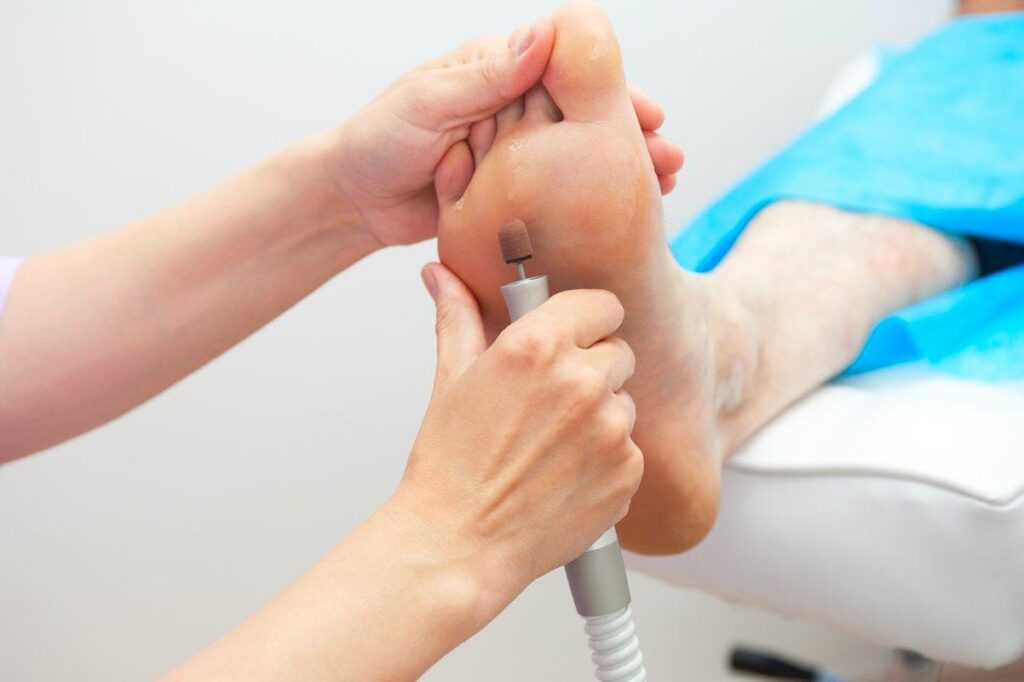Blisters represent localized skin irritations filled with fluid buildup in bodies that naturally cushion or protect deeper tissues below from friction or trauma damage. Feet endure constant pressures making them susceptible to blister formation, especially around toes, heels, sides, or ball-of-foot regions through ill-fitting shoes rubbing repeatedly irritating epithelial layers as we walk.
While bothersome when new forming, proper home care usually resolves discomfort over days without incident. However, deeper skin layer penetration becoming infected through bacterial infiltration creates complications necessitating medical interventions protecting against heightened risks like cellulitis, swollen lymph nodes, blood poisoning, and deep tissue damage if left untreated.
What triggers infection escalations?
Several factors turn standard friction fluid-filled blisters into breeding grounds for dangerous bacterial bloom infections internally:
- Puncture popping – Compromising protective skin layers allows external germ introduction into the wound.
- Immunocompromised states – Certain health conditions like diabetes or medications suppress immune responses unable to fight infections once they take hold.
- Poor hygiene practices – Failing proper blister skin sterilization before dressing changes or infrequent bandage replacement enables bacterial invasion into ideal warm, moist environments.
- Tight footwear – Constricting shoes prevent drainage and oxygenation while applying pressures forcing bacteria particles deeper through compromised cracked skin barriers.
Symptoms differentiating infected blisters
infected blister on foot naturally fading away through home rest and care, escalated infections announced through amplified symptoms:
- Intensified pain/sensitivity – Previously tender zones transform into an extremely hot, acute sensitivity to the touch indicating swelling inflammation below.
- Expanding redness/heat – Skin reddening and hot-to-the-touch skin spreading beyond the blister borders signals the underlying spread of bacterially infected regions.
- Pus/discharge – Yellow/greenish viscous fluid seeping from pores surrounds the blister instead of clear plasma, indicating a high white blood cell response.
- Foul odors – Distinct unpleasant smells emanate from foot signals cultivating bacterial bloom including aggressive types like streptococcus or staphylococcus organisms.
Rapid swelling, purulent discharge, or foul smells represent warning signs of infection taking hold necessitating antibiotic intervention to protect against heightened complications like cellulitis inflammation risks. Don’t hesitate to seek care by observing these acute symptoms.
Effective home care easing discomfort
Before infections advance seeking urgent care, proactive home steps minimize discomfort aiding recovery:
- Sterile bandages – Apply new dressings at least once a day using clean, sterile gauze or adhesive bandages.
- Warm soaks – Epsom salt foot soaks soften the skin, improve drainage and oxygenation, and fight infection bloom.
- Topical antibiotic ointments – Over-the-counter topical antibiotics like Neosporin or Polysporin applied on dressing changes fight bacteria introduction and combat early-stage infection.
- Limited walking – Avoid excessive walking to reduce friction and sweat accumulation that slows healing and promotes bacterial growth. Use crutches when moving.
- Light stretching – Gentle flex motions improve circulation without over-compressing blisters speeding tissue repairs impeded through inactivity lowering immunity responses further.
Catching escalation early best sustains home healing trajectories avoiding requiring advanced interventions like oral prescription antibiotics or clinical debridement procedures used to remove infected tissues surgically. Don’t ignore acute pain or discomfort hoping problems fade without responsive action taken.

Comments are closed.